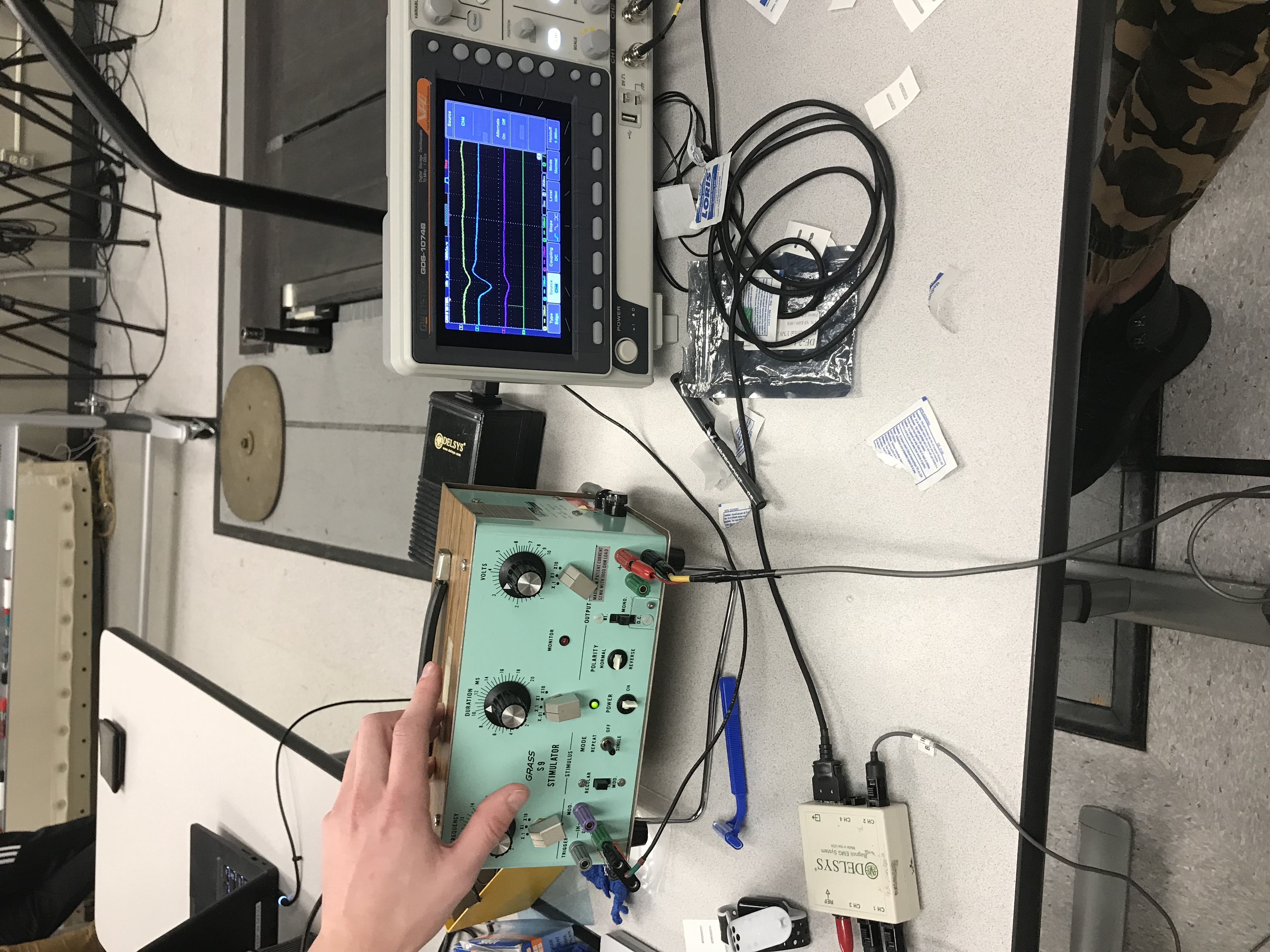Teaching Philosophy
Teaching Positions Diversity Statement
My interest in engineering developed at a young age when I took apart the VCR. To encourage me, but leave the home functioning, my parents bought me Lego blocks where I would spend countless hours imagining, constructing, and discovering. These early experiences led to me pursuing part of my high school diploma at the Ontario Science Centre Science School, where I got the unique opportunity to tinker with public science exhibits and develop my science communication skills.
Beyond my interest and passion for engineering, I have always felt a calling to teach. To me, teaching is a practice that must be continually cultivated. I think of a teacher as someone approachable, honest, and relatable to the learners. Fostering a welcoming environment as a teacher is important to me as it can positively impact the learning process, enhance the quality of the learning that happens, and be a motivation to the learners themselves [1]. To cultivate my teaching acumen, I have continually sought out diverse opportunities. To this day, my teaching experiences are based on:
- During my undergraduate and master’s, I developed and instructed multi-day outreach programs for elementary and high school students. These outreach programs focused on exposing students to engineering by providing them with hands-on, problem-solving, and design-based projects coupled with fundamental theory.
- For two semesters during my master’s, I instructed weekly programming tutorials (30-50 students) for the first-year engineers at Queen’s University.
- For two semesters during my master’s, I facilitated 1st-year capstone projects meeting with groups weekly helping with project management, direction, and goal setting.
- During my 2-year post-graduate fellowship, I mentored several undergraduate students in the engineering science department at Harvard University.
- For two semesters during my Ph.D. I held teaching assistantships where I led and instructed weekly biomedical physiology labs providing undergraduate students with hands-on experiences involving experimental design, data collection, and data analysis.
- For six semesters during my Ph.D., I held consecutive script marking positions working closely with a senior instructor to mark exams and develop questions for exams. I was continually invited to give guest lectures on exoskeletons and robotics every semester.
- Participating in professional certifications such as the 13-week program in University teaching and learning at SFU to hone in on and get feedback on my teaching physiology and practice.

In my experience engineering pedagogy can be heavily lecture-based theoretical coursework paired with only a few hands-on laboratory courses. As a result, there can be a disconnect between the knowledge acquired in the classroom to relevance to practical applications [2]. Often only the students who are involved in extracurricular projects, internships, or research get hands-on experience making the connection between theory and practice. In my view then, learning is about getting the tools and experiences one needs to integrate critical thinking and agile problem-solving into novel engineering problems. I believe that providing students experiences where they can apply theory to practice early on in the curriculum is the best way to maximize understanding of learned engineering principles and instil the problem-solving acumen students will need in their future.
Based on these ideas, my current teaching philosophy is to create and foster an environment in which students can learn deeply. This involves five teaching concepts: (1) student engagement, (2) fostering collaboration, (3) self-directed learning, (4) tools, and (5) frequent feedback.
Student engagement. As an educator, I strive to incorporate experiential learning practices, a philosophy of learning by doing, to promote engagement in my learners. By fostering an environment that provides engaging, relevant, and interesting experiences the learning itself can be deeper and more meaningful [3]. For example, during the physiology labs that I was teaching, I had students work in teams using novel data acquisition tools. Having students work together while using relevant tools to solve problems created active engagement and allowed the learners to develop a deeper understanding of the concepts. As a result, the learners are more likely to retain that knowledge and apply it appropriately in novel situations [4].
Fostering collaboration. I believe that engineers must learn how to work collaboratively to succeed. One method I have been working on incorporating into my teaching practice is a flipped classroom. For example, I would like to reshape a theory-heavy undergraduate course (e.g. dynamics or kinematics) where the fundamental principles are provided to the students remotely via video instruction or lectures and class time is used for engaging and collaborating with peers to solve hands-on problems. Such an approach can provide increased peer-to-peer interaction and deeper engagement with the material while promoting collaboration to achieve a common goal [5]. By fostering collaboration within the classroom, the learns become teachers amongst themselves.
Self-directed learning. I consider myself a successful teacher when I help my students become self-directed learners. I believe that self-directed learners have better chances for success in the engineering workplace [6]. When I was instructing weekly programming tutorials, I curated short puzzles at the start of the tutorials. The puzzles encouraged agile thinking and allowed students to pursue innovative and unique strategies while pushing them beyond their current level of understanding. I found that students not only enjoyed this but developed their reasoning and used critical thinking to propose solutions to the puzzles.
Tools. I believe that engineering students must get hands-on experiences with relevant tools. I keep up to date on the latest technology used in my field of research and strongly believe in bringing these tools into the classroom. Not only is this a form of motivation for the learners, but technology can help link relevance outside of the classroom [7]. Currently, I am developing a course that utilizes the latest methods of deep learning to study human biomechanics. With this course, I aim to provide novel and unique learning experiences for the future generation of engineers.
Feedback. I aim to help students know what they don’t know to help focus learning. I believe that students need appropriate feedback from the teacher on performance to most benefit from courses [8]. Frequent detailed feedback is one of the strongest correlations with a learner’s success outside of the classroom [9]. One of my teaching principles is to be open and approachable to my students. I do this to not only cultivate a good learning environment but to encourage students to be open with me about their learning. In lab-based courses, I have asked for verbal feedback after each lab to help in improving the labs, and in larger classroom settings, I have implemented simple online polls to encourage the sharing of what students may be struggling with. I believe that quick feedback is an important tool for me as an educator to gauge the learning, as well as to increase the success of the learners.\

[1] S. Schut, J. van Tartwijk, E. Driessen, C. van der Vleuten, and S. Heeneman, “Understanding the influence of teacher–learner relationships on learners’ assessment perception,” Adv. Health Sci. Educ. Theory Pract., vol. 25, no. 2, pp. 441–456, May 2020.
[2] R. M. Lima, D. Carvalho, M. Assunção Flores, and N. Van Hattum-Janssen, “A case study on project led education in engineering: students’ and teachers’ perceptions,” Eur. J. Eng. Educ., vol. 32, no. 3, pp. 337–347, Jun. 2007
[3] H. Li, A. Öchsner, and W. Hall, “Application of experiential learning to improve student engagement and experience in a mechanical engineering course,” Eur. J. Eng. Educ., vol. 44, no. 3, pp. 283–293, May 2019.
[4] M. A. Albanese and S. Mitchell, “Problem-based learning: a review of literature on its outcomes and implementation issues,” Acad. Med., vol. 68, no. 1, pp. 52–81, Jan. 1993.
[5] A. Karabulut-Ilgu, N. Jaramillo Cherrez, and C. T. Jahren, “A systematic review of research on the flipped learning method in engineering education: Flipped Learning in Engineering Education,” Br. J. Educ. Technol., vol. 49, no. 3, pp. 398–411, May 2018.
[6] N. Falkner, R. Sooriamurthi, and Z. Michalewicz, “Puzzle-Based Learning for Engineering and Computer Science,” Computer. 2010, doi: 10.1109/mc.2009.417
[7] T. Byers, T. Seelig, S. Sheppard, and P. Weilerstein, “Its role in engineering education,” Bridge, vol. 43, no. 2, pp. 35–40, 2013
[8] A. W. Chickering, Applying the Seven Principles for Good Practice in Undergraduate Education: New Directions in Teaching and Learning, Number 47. Wiley, 1991
[9] S. Hassel and N. Ridout, “An Investigation of First-Year Students’ and Lecturers’ Expectations of University Education,” Front. Psychol., vol. 8, p. 2218, 2017\
